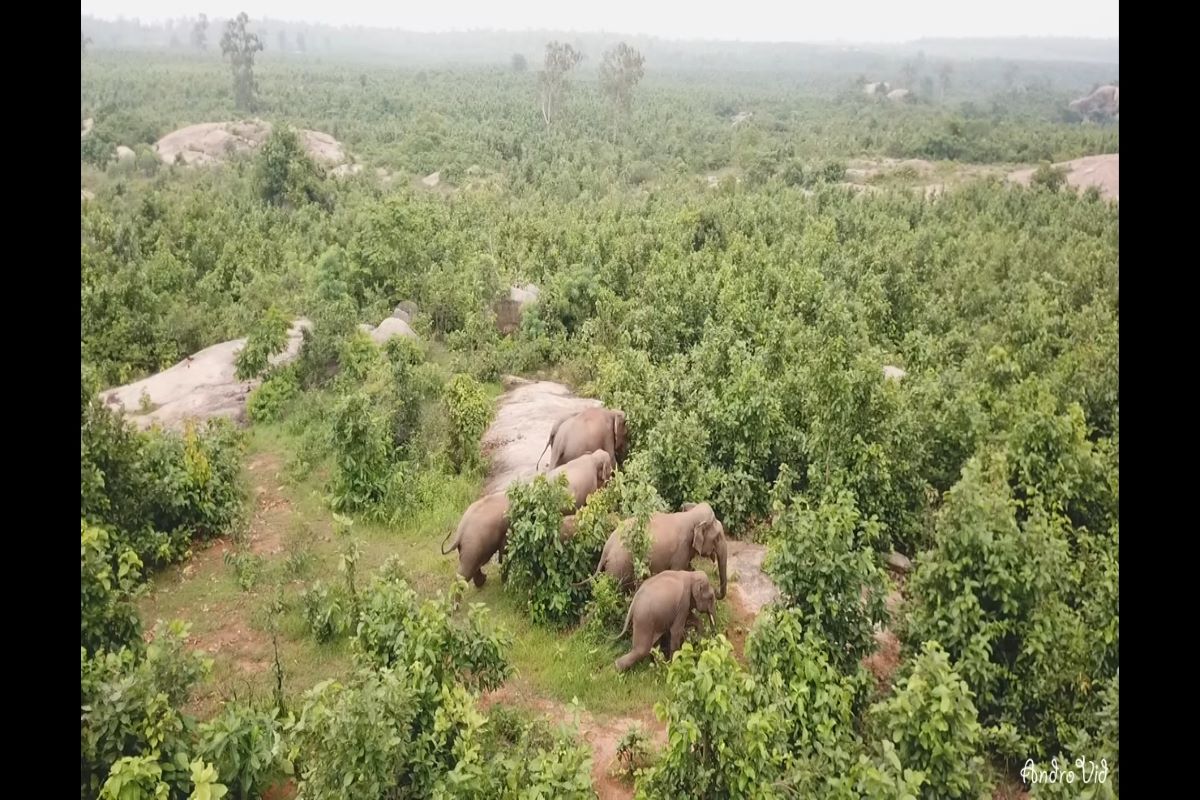In an initiative to curb man-animal conflict, the State Forest Department has pressed into service the thermal drone cameras in the elephant depredation affected pockets of Keonjhar district to track the nocturnal movement of pachyderms.
The mineral-rich Keonjhar district with vast expanse of dense forest often witnesses man-elephant conflicts with both humans and elephants losing their lives. The district is home to 50 elephants as per the last conducted census of these animals. The migration of elephants from Jharkhand and Similipal to Keonjhar forest has also become a recurring feature much to the worry of forest authorities.
The drones fitted with thermal sensing cameras have been deployed in forest areas which are vulnerable to intrusion of wild elephants. It is a herculean task to prevent the acts of straying of wild elephants during night hours. The thermal drone has emerged as an effective tool to track the elephants and other wild elephants.
The thermal drone surveillance is being conducted across the seven forest ranges of the district. It was first launched in December last. And since then, the camera tool has proved effective in helping out the forest personnel at the ground level to keep tabs on elephants’ movement at night, said the Divisional Forest Officer, Keonjhar Forest Division, Dhamdhere Dhanraj Hanumant.
Drone with a normal camera receives light signals, which creates images. But a thermal camera picks up the difference in the temperature whenever there is movement of a living species. The normal drone is being deployed in daytime while the drone with thermal sensing is being deployed after sunset, he said.
Apart from tracking the elephant herd, we are also able to come to the rescue of distressed elephants stuck in dense forest areas, he said.
Thermal drone cameras are proving very useful in night hours. Herd movement is being detected on a real time basis. Herd composition can be distinctly known. Direction of elephant movement can be ascertained based on which elephant squad can be deployed objectively. The villagers can be alerted in advance with more objective information. Drone is also used to drive elephants to the desired direction.
Odisha, which houses 70 per cent of total elephant population in eastern India, has been witnessing deteriorating human-elephant conflict with elephant depredation spreading to 26 out of 30 districts of the state. The wild animals wander villages searching for food due to shrinking habitats.
The protected parks and wildlife sanctuaries, conferred habitation corridors of the elephants, face the onslaught of massive encroachment from people who live and forage, or graze cattle in the forests. The human interference of this nature is giving rise to frequent man-pachyderm confrontation.












